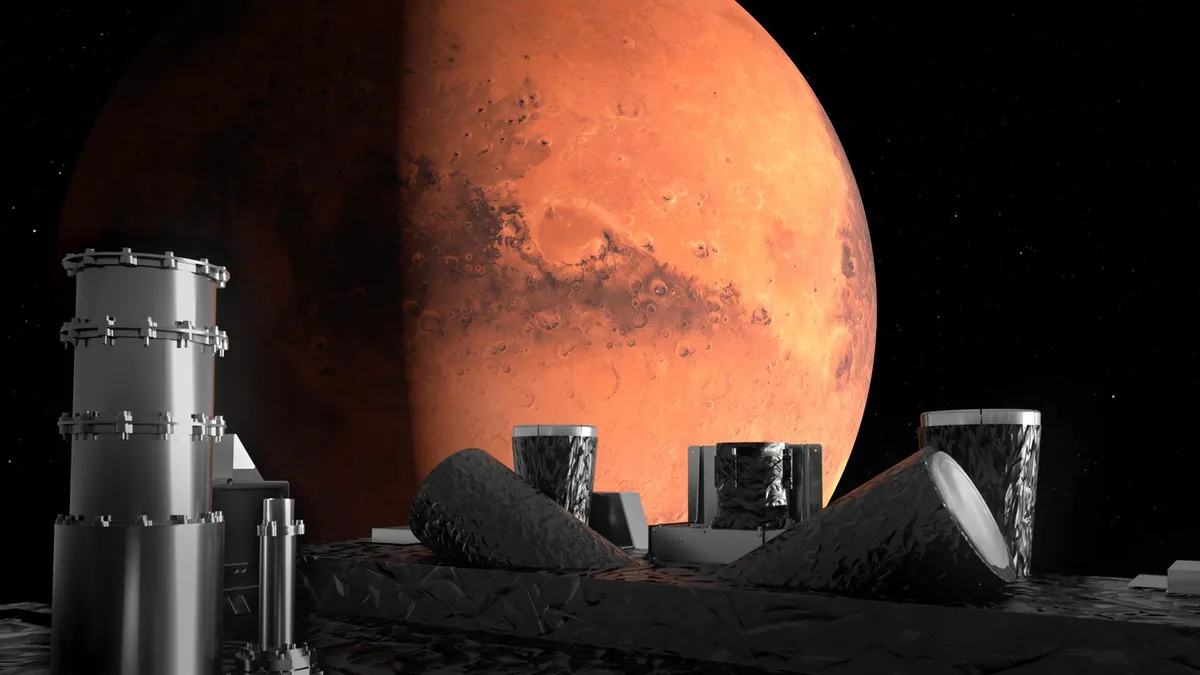
Get ready for a spectacular event this Thursday! Join us live as scientists working on ESA’s Hera mission for planetary defense unveil the mission’s first scientific observations beyond the Earth-Moon system. This exciting milestone follows Hera's imminent flyby of Mars, a key event for the future of space exploration.
On Wednesday, March 12, 2025, Hera, which is ESA's first Space Safety mission, will come within a remarkable 5000 km of the surface of the red planet. Additionally, it will approach Deimos, Mars’s more distant and intriguing moon, at a distance of just 300 km. During this flyby, Hera will perform critical observations of both Mars and Deimos, gathering invaluable data to enhance our understanding of these celestial bodies.
After completing its observations, Hera will need to swing its High Gain Antenna back to Earth to transmit the collected data. The following day, on Thursday, March 13, these stunning images will be premiered by Hera’s science team from ESA’s ESOC mission control centre in Darmstadt, Germany. The premiere will be part of a public webcast starting at 11:50 CET, where the team will explain the significance of the new findings.
During the webcast, the science team will be joined by ESA astronaut Alexander Gerst and renowned science fiction writer Andy Weir, the author of popular novels such as The Martian and Project Hail Mary. Additionally, a surprise special guest will make an appearance, adding to the excitement of this groundbreaking event.
Hera is equipped with three sophisticated instruments for the flyby, each designed to gather unique data about Deimos from a minimum distance of 1000 km:
Asteroid Framing Camera: Hera’s black and white 1020x1020 camera captures images in visible light, serving both navigation and scientific investigation purposes. Hyperscout H: This hyperspectral imager observes in a range of colors beyond human vision, utilizing 25 visible and near-infrared spectral bands to characterize the mineral makeup of Deimos. Thermal Infrared Imager: Supplied by the Japan Aerospace Exploration Agency (JAXA), this imager works at mid-infrared wavelengths to chart surface temperature, revealing physical properties such as roughness, particle size distribution, and porosity.The results from the close encounter with Deimos are expected to provide crucial insights that will guide operational planning for the Martian Moons eXploration Mission (MMX), being led by JAXA in collaboration with NASA, the French space agency CNES, the German Aerospace Center (DLR), and ESA. MMX aims to collect detailed measurements of both Martian moons and even land on Phobos to retrieve a sample for analysis back on Earth.
As Hera continues its mission, it will head towards the Didymos system, where Didymos measures 780 meters across and Dimorphos is just 151 meters wide. While these twin destinations are significantly smaller than the city-sized Deimos moon, Hera remains on course for its rendezvous. A series of ‘impulsive rendezvous’ thruster firings scheduled for October 2026 will fine-tune its trajectory, allowing it to reach the Didymos system by December of that same year.
Don’t miss the chance to witness this historic scientific event as we delve deeper into our solar system with ESA's Hera mission!